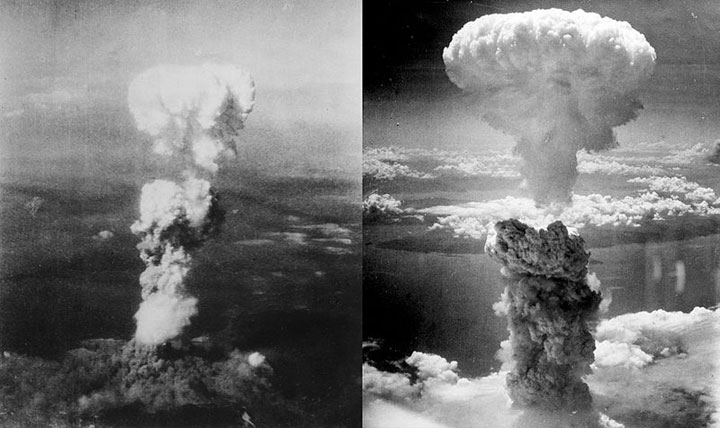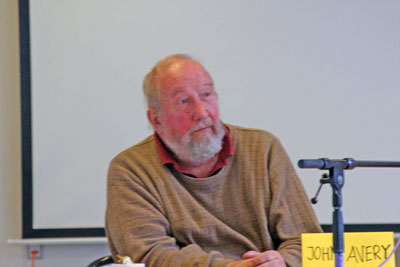World War: Nobody Had The Slightest Idea What It Would Be Like
By John Scales Avery
31 August, 2012
Countercurrents.org

None of the people who started the First World War had the slightest idea what it would be like. The armies of Europe were dominated by the old feudal landowning class, whose warlike traditions were rooted in the Middle Ages. The counts and barons who still ruled Europe’s diplomatic and military establishments knew how to drink champagne, dance elegantly, ride horses, and seduce women. They pranced off to war in high spirits, the gold on their colorful uniforms glittering in the sunshine, full of expectations of romantic cavalry charges, kisses stolen from pretty girls in captured villages, decorations, glory and promotion, like characters in “The Chocolate Soldier” or “Die Fledermaus”. The romantic dreams of glory of every small boy who ever played with toy soldiers were about to become a thrilling reality!
But the war, when it came, was not like that. Technology had taken over. The railroads, the telegraph, high explosives and the machine gun had changed everything. The opposing armies, called up by means of the telegraph and massed by means of the railroads, were the largest ever assembled up to that time in the history of the world. In France alone, between August 2 and August 18, 1914, the railway system transported 3,781,000 people under military orders. Across Europe, the railways hurled more than six million highly armed men into collision with each other. Nothing on that scale had ever happened before, and no one had any idea of what it would be like.
At first the Schlieffen Plan, conceived decades earlier, seemed to be working perfectly. When Kaiser Wilhelm had sent his troops into battle, he had told them: “You will be home before the leaves are off the trees,” and at first it seemed that his prediction would be fulfilled. However, the machine gun had changed the character of war. Attacking infantry could be cut down in heaps by defending machine gunners. The war came to a stalemate, since defense had an advantage over attack.
On the western front, the opposing armies dug lines of trenches stretching from the Atlantic to the Swiss border. The two lines of trenches were separated by a tangled mass of barbed wire. Periodically the generals on one side or the other would order their armies to break through the opposing line. They would bring forward several thousand artillery pieces, fire a million or so high explosive shells to cut the barbed wire and to kill as many as possible of the defenders, and then order their men to attack.
The soldiers had to climb out of the trenches and struggle forward into the smoke. There was nothing else for them to do. If they disobeyed orders, they would be court- marshaled and shot as deserters. They were driven forward and slaughtered in futile attacks, none of which gained anything. Their leaders had failed them. Civilization had failed them. There was nothing for them to do but to die, to be driven forward into the poison gas and barbed wire and to be scythed down by machine gun fire, for nothing, for the ambition, vanity and stupidity of their rulers.
At the battle of Verdun, 700,000 young men were butchered in this way, and at the battle of Somme, 1,100,000 young lives were wasted. For millions of Europe’s young men, the trail lead only to death in the mud and smoke; and for millions of mothers and sweethearts waiting at home, dreams of the future were shattered by a telegram announcing the death of the boy for whom they were waiting.
When the war ended four years later, ten million young men had been killed and twenty million wounded, of whom six million were crippled for life. The war had cost 350,000,000,000 1919 dollars. This was a calculable cost; but the cost in human suffering and brutalization of values was incalculable. It hardly mattered whose fault the catastrophe had been. Perhaps the Austrian government had been more to blame than any other. But blame for the war certainly did not rest with the Austrian people nor with the young Austrians who had been forced to fight. However, the tragedy of the First World War was that it created long-lasting hatred between the nations involved, and in this way it lead, only twenty years later, to an even more catastrophic global war.
In the Second World War, the number of soldiers killed was roughly the same as in World War I, but the numbers of civilian deaths was much larger. In the USSR alone, about 20 million people are thought to have been killed, directly or indirectly, by World War II, and of these only 7.5 million were battle deaths. Many of the USSR’s civilian deaths were caused by starvation, disease or exposure. Civilian populations also suffered greatly in the devastating bombings of cities such as London, Coventry, Rotterdam, Warsaw, Dresden, Cologne, Berlin, Tokyo, Hiroshima and Nagasaki. In World War II, the total number of deaths, civilian and military, is estimated to have been between 62 and 78 million.
Do Benjamin Netanyahu and Ehud Barak, who are contemplating starting what might develop into World War III, have any imaginative concept of what it would be like? Netanyahu has told the Israeli people that only 500 of their citizens would be killed, and that the conflict would be over in a month. One is reminded of the Austrian leaders in 1914, who started a what they thought would be a small action to punish the Serbian nationalists for their Pan-Slavic ambitions. When the result was a world-destroying war, they said “That is not what we intended.” Of course it is not what they intended, but nobody can control the escalation of conflicts. The astonishing unrealism of the Netanyahu-Barak statements also reminds one of Kaiser Wilhelm's monumentally unrealistic words to his departing troops: “You will be home before the leaves are off the trees.”
The planned attack on Iran would not only violate international law, but would also violate common sense and the wishes of the people of Israel. The probable result would be a massive Iranian missile attack on Tel Aviv, and Iran would probably also close the Straits of Hormuz. If the United States responded by bombing Iranian targets, Iran would probably use missiles to sink one or more of the US ships in the Persian Gulf. One can easily imagine other steps in the escalation of the conflict: a revolution in Pakistan; the entry of nuclear-armed Pakistan into the war on the side of Iran; a preemptive nuclear strike by Israel against Pakistan's nuclear weapons; and Chinese-Russian support of Iran. In the tense atmosphere of such a war, the danger of a major nuclear exchange, due to accident or miscalculation, would be very great.
Today, because the technology of killing has continued to develop, the danger of a catastrophic war with hydrogen bombs hangs like a dark cloud over the future of human civilization. The total explosive power of today's weapons is equivalent to roughly half a million Hiroshima bombs. To multiply the tragedy of Hiroshima and Nagasaki by a factor of half a million changes the danger qualitatively. What is threatened today is the complete breakdown of human society.
There are 20,000 nuclear weapons in the world today, about 4,000 of them on hair-trigger alert. The phrase “hair trigger alert” means that the person in charge has only 15 minutes to decide whether the warning from the radar system was true of false, and to decide whether or not to launch a counterattack. The danger of accidental nuclear war continues to be high. Technical failures and human failures have many times brought the world close to a catastrophic nuclear war. Those who know the system of “deterrence” best describe it as “an accident waiting to happen”.
No one can win a nuclear war, just as no one can win a natural catastrophe like an earthquake or a tsunami. The effects of a nuclear war would be global, and all the nations of the world would suffer - also neutral nations.
Recent studies by atmospheric scientists have shown that the smoke from burning cities produced by even a limited nuclear war would have a devastating effect on global agriculture. The studies show that the smoke would rise to the stratosphere, where it would spread globally and remain for a decade, blocking sunlight, blocking the hydrological cycle and destroying the ozone layer. Because of the devastating effect on global agriculture, darkness from even a small nuclear war could result in an estimated billion deaths from famine. This number corresponds to the fact that today, a billion people are chronically undernourished. If global agriculture were sufficiently damaged by a nuclear war, these vulnerable people might not survive. A large-scale nuclear war would be an even greater global catastrophe, completely destroying all agriculture for a period of ten years.
The tragedies of Chernobyl and Fukushima remind us that a nuclear war would make large areas of the world permanently uninhabitable because of long-lasting radioactive contamination.
The First World War was a colossal mistake. Today, the world stands on the threshold of an equally enormous disaster. Must we again be lead into a world-destroying war by a few blind individuals who do not have the slightest idea of what such a war would be like?
 John Avery received a B.Sc. in theoretical physics from MIT and an M.Sc. from the University of Chicago. He later studied theoretical chemistry at the University of London, and was awarded a Ph.D. there in 1965. He is now Lektor Emeritus, Associate Professor, at the Department of Chemistry, University of Copenhagen. Fellowships, memberships in societies: Since 1990 he has been the Contact Person in Denmark for Pugwash Conferences on Science and World Affairs. In 1995, this group received the Nobel Peace Prize for their efforts. He was the Member of the Danish Peace Commission of 1998. Technical Advisor, World Health Organization, Regional Office for Europe (1988- 1997). Chairman of the Danish Peace Academy, April 2004. http://www.fredsakademiet.dk/ordbog/aord/a220.htm
John Avery received a B.Sc. in theoretical physics from MIT and an M.Sc. from the University of Chicago. He later studied theoretical chemistry at the University of London, and was awarded a Ph.D. there in 1965. He is now Lektor Emeritus, Associate Professor, at the Department of Chemistry, University of Copenhagen. Fellowships, memberships in societies: Since 1990 he has been the Contact Person in Denmark for Pugwash Conferences on Science and World Affairs. In 1995, this group received the Nobel Peace Prize for their efforts. He was the Member of the Danish Peace Commission of 1998. Technical Advisor, World Health Organization, Regional Office for Europe (1988- 1997). Chairman of the Danish Peace Academy, April 2004. http://www.fredsakademiet.dk/ordbog/aord/a220.htm
Comments are moderated


